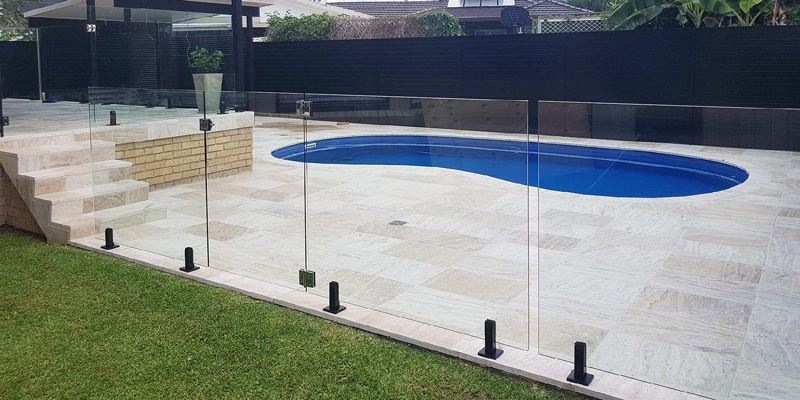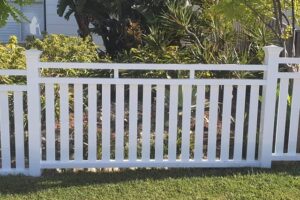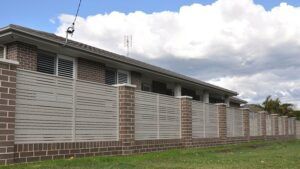Australians love a nice, refreshing dip in the pool! There’s no better way to cool off during the summer months.
But without proper care, pools can be dangerous. Accidental pool drownings tragically claim the lives of 10 children on average each year. This makes pools one of the biggest causes of accidental infant deaths in the country.
While that is grim, there is hope. Pool fence regulations almost entirely eliminate the risk of accidental drowning – provided they are followed.
To make sure your pool is compliant with pool fencing requirements, here is a complete guide to pool fence regulations.
What are Pool Fence Regulations?
Mandatory pool fence regulations were first introduced in 1990, and have continued to become more specific ever since. Essentially, they regulate things like legal fence height, the gap width between fence rails and the types of gates that can be installed.
These regulations are all designed to prevent people (specifically children) from unintentionally drowning. Since their introduction and constant evolution, pool drowning deaths continue to decrease.
Consequences for Not Complying Pool Fence Regulations
Aside from putting your children at risk, not complying with pool fence regulations also carries legal penalties. While the law can be different depending on the state, as of 2019 non-compliant pool barriers carry an approximate penalty of $5000.
Furthermore, if a person dies or is injured due to an unsecured pool area, you could be liable and face much more significant charges, including jail time.
Australia’s Pool Fence Regulations
To protect your children from drowning, and yourself from legal ramifications, here is a comprehensive list of Australia’s pool fence regulations.
Important note: precise regulations can differ between states. This is a guide to general Australian pool fencing requirements. For information regarding your particular state, see the resources at the end of the article.
Legal Fence Height
The minimum legal fence height for pools is 1200mm, or 1.2m. The fence must also be less than 100mm off the ground. If the fence complies with these two heights, it shouldn’t be possible for young children to climb over or under it.
Minimum Fence Gap Widths
If the horizontal rails of a fence are more than 900mm wide, the vertical rails cannot be more than 100mm apart. If the horizontal rails are less than 900mm apart, the vertical rails cannot be more than 10mm wide.
Latch Device Compliance
Gates must be self-closing and self-latching, with the latch being on the pool side of the gate. In addition to this, they must open away from the direction of the pool. This prevents accidentally forgetting to lock or close the gate. It also means children can’t accidentally lean on the gate and fall into the pool area.
Durable Materials
Pool fences must be made of durable, approved materials. With that said, a pool perimeter doesn’t necessarily have to be a fence. Some older pools have walls of the home that act as barriers. While this is illegal for new builds, it may be compliant for existing homes providing any windows or doors leading to the pool areas cannot be opened.
Non-Climbable Zone
The non-climbable zone is a perimeter of 900mm around the pool fence that prevents it from being climbed. This zone must not contain anything that could be used to assist climbing, such as trees, chairs, ladders etc.
There is also an internal non-climbable zone that runs 300mm into the pool area. This side of the fence must also be clear of climbing aids, especially ones which could be pulled through the fence.
Pools Under Construction: Do Pool Fence Regulations Apply?
Responsibility for a pool under construction lies with the owner and the builder at different stages of the process. Because pools under construction may still hold water or pose a fall risk, they must have a compliant barrier in place.
It is the responsibility of the builder to maintain this fence until they issue the final occupancy certificate, after which the owner is responsible.
Inflatable Pools: Do Pool Fence Regulations Apply?
Whether or not an inflatable swimming pool needs a regulation fence depends on its height.
Below 300mm in Height
Below 300mm in height, an inflatable pool doesn’t need a fence. However, it will have warning labels which should be observed. Even a small pool can be deadly for a child so maintain supervision at all times.
Above 300mm in Height
Above 300mm in height, inflatable pools can require fencing. This can vary widely based on the exact height, the manufacturer, and your local council regulations. To avoid potential legal consequences, you should get in touch with your council before you buy the pool to find out what you’ll need to do.
Spas: Do Pool Fence Regulations Apply?
Spas are a little different from pools because they are usually covered when not in use. Provided your spa has a child proof cover or barrier, it doesn’t require a fence. However, if it is uncovered, it defaults to the same pool fencing regulations as a normal pool.
Unsure if your Pool Meets Pool Fence Regulations?
If you aren’t sure if your pool fence is compliant, don’t wait for a fine – or for tragedy to strike.
Instead, get in touch with Fencing Manufacturers, your professional pool fence manufacturers, installer and expert.
For an assessment of your pool fence, or to construct a new one, get in touch today.
State-Specific Pool Fence Regulations
For precise details about your state, please take advantage of the following resources:




